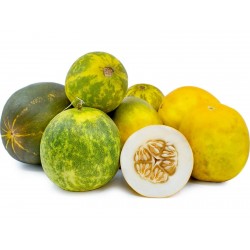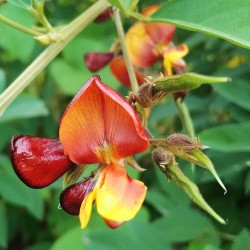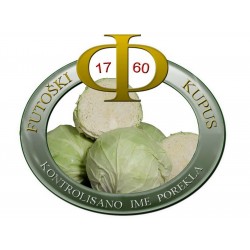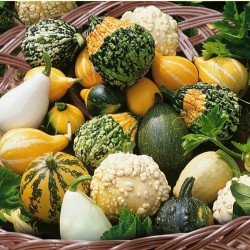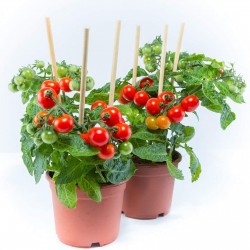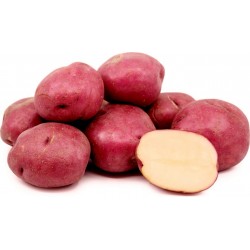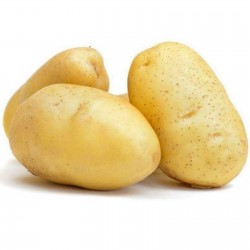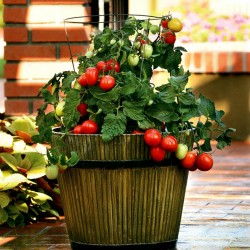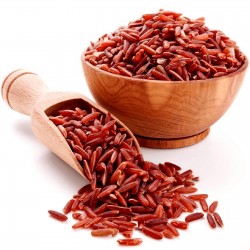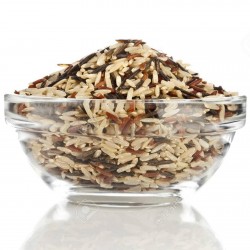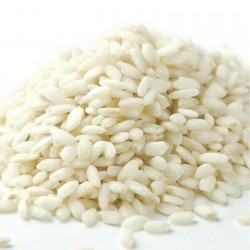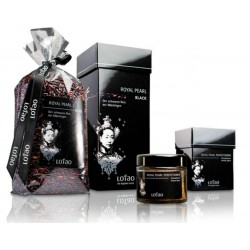Seeds Gallery Com,
5/
5
<h2><strong>Pigeon pea seeds (Cajanus cajan)</strong></h2>
<h2><span style="color: #ff0000;" class=""><strong>Price for Package of 10 (1.5g) seeds.</strong></span></h2>
<p>The<span> </span><b>pigeon pea</b><sup id="cite_ref-GRIN_1-0" class="reference"></sup><span> </span>(<i><b>Cajanus cajan</b></i>), also known as<span> </span><b>pigeonpea</b>,<span> </span><b>red gram</b>,<span> </span><b>tur</b>,<sup id="cite_ref-MoEFCC_2-0" class="reference"></sup><span> </span><b>pwa kongo</b><span> </span>in<span> </span>Haiti,<sup id="cite_ref-3" class="reference"></sup>,<span> </span><b>guandú</b><span> </span>and<span> </span><b>frijol de palo</b><span> </span>in<span> </span>Ibero-America, or as<span> </span><b>gungo peas</b><span> </span>in Jamaica,<sup id="cite_ref-4" class="reference"></sup><span> </span>is a perennial<span> </span>legume<span> </span>from the<span> </span>family<span> </span>Fabaceae. Since its<span> </span>domestication<span> </span>in the<span> </span>Indian subcontinent<span> </span>at least 3,500 years ago, its seeds have become a common<span> </span>food<span> </span>in Asia, Africa, and Latin America. It is consumed on a large scale in<span> </span>South Asia<span> </span>and is a major source of<span> </span>protein<span> </span>for the population of the Indian subcontinent. It is the primary accompaniment to rice or<span> </span>roti<span> </span>(flat bread) and has the status of<span> </span>staple food<span> </span>throughout the length and breadth of India.</p>
<h2><span class="mw-headline" id="Origins">Origins</span></h2>
<div class="thumb tright">
<div class="thumbinner"><img alt="Pigeon pea seeds (Cajanus cajan)" src="https://upload.wikimedia.org/wikipedia/commons/thumb/3/35/Pigeon_pea_flower_at_Sydney_2019.jpg/250px-Pigeon_pea_flower_at_Sydney_2019.jpg" decoding="async" width="250" height="166" class="thumbimage" srcset="//upload.wikimedia.org/wikipedia/commons/thumb/3/35/Pigeon_pea_flower_at_Sydney_2019.jpg/375px-Pigeon_pea_flower_at_Sydney_2019.jpg 1.5x, //upload.wikimedia.org/wikipedia/commons/thumb/3/35/Pigeon_pea_flower_at_Sydney_2019.jpg/500px-Pigeon_pea_flower_at_Sydney_2019.jpg 2x" data-file-width="4928" data-file-height="3264" title="Pigeon pea seeds (Cajanus cajan)" />
<div class="thumbcaption">
<div class="magnify"></div>
Pigeon pea flower at Sydney 2019</div>
</div>
</div>
<div class="thumb tright">
<div class="thumbinner"><img alt="Pigeon pea seeds (Cajanus cajan)" src="https://upload.wikimedia.org/wikipedia/commons/thumb/3/3e/Cajanus_cajan.jpg/220px-Cajanus_cajan.jpg" decoding="async" width="220" height="171" class="thumbimage" srcset="//upload.wikimedia.org/wikipedia/commons/thumb/3/3e/Cajanus_cajan.jpg/330px-Cajanus_cajan.jpg 1.5x, //upload.wikimedia.org/wikipedia/commons/thumb/3/3e/Cajanus_cajan.jpg/440px-Cajanus_cajan.jpg 2x" data-file-width="1986" data-file-height="1545" title="Pigeon pea seeds (Cajanus cajan)" />
<div class="thumbcaption">
<div class="magnify"></div>
Pigeon pea is a perennial which can grow into a small tree.</div>
</div>
</div>
<div class="thumb tright">
<div class="thumbinner"><img alt="Pigeon pea seeds (Cajanus cajan)" src="https://upload.wikimedia.org/wikipedia/commons/thumb/2/2d/Cajanus_cajan_MHNT.BOT.2015.2.47.jpg/220px-Cajanus_cajan_MHNT.BOT.2015.2.47.jpg" decoding="async" width="220" height="156" class="thumbimage" srcset="//upload.wikimedia.org/wikipedia/commons/thumb/2/2d/Cajanus_cajan_MHNT.BOT.2015.2.47.jpg/330px-Cajanus_cajan_MHNT.BOT.2015.2.47.jpg 1.5x, //upload.wikimedia.org/wikipedia/commons/thumb/2/2d/Cajanus_cajan_MHNT.BOT.2015.2.47.jpg/440px-Cajanus_cajan_MHNT.BOT.2015.2.47.jpg 2x" data-file-width="3182" data-file-height="2256" title="Pigeon pea seeds (Cajanus cajan)" />
<div class="thumbcaption">
<div class="magnify"></div>
<i>Cajanus cajan</i><span> </span>–<span> </span>MHNT</div>
</div>
</div>
<div class="thumb tright">
<div class="thumbinner"><img alt="Pigeon pea seeds (Cajanus cajan)" src="https://upload.wikimedia.org/wikipedia/commons/thumb/b/bc/Cajanus_cajan%2C_flowers.jpg/220px-Cajanus_cajan%2C_flowers.jpg" decoding="async" width="220" height="293" class="thumbimage" srcset="//upload.wikimedia.org/wikipedia/commons/thumb/b/bc/Cajanus_cajan%2C_flowers.jpg/330px-Cajanus_cajan%2C_flowers.jpg 1.5x, //upload.wikimedia.org/wikipedia/commons/thumb/b/bc/Cajanus_cajan%2C_flowers.jpg/440px-Cajanus_cajan%2C_flowers.jpg 2x" data-file-width="2448" data-file-height="3264" title="Pigeon pea seeds (Cajanus cajan)" />
<div class="thumbcaption">
<div class="magnify"></div>
Pigeon pea flowers</div>
</div>
</div>
<p>The cultivation of the pigeon pea goes back at least 3,500 years. The centre of origin is probably peninsular India, where the closest wild relatives (<i>Cajanus cajanifolia</i>) occur in tropical deciduous woodlands.<sup id="cite_ref-5" class="reference">[5]</sup><span> </span>Archaeological finds of pigeon pea dating to about 3,400 years ago (14th century BC) have been found at<span> </span>Neolithic<span> </span>sites in<span> </span>Kalaburagi, Karnataka<span> </span>(Sanganakallu) and its border areas (Tuljapur Garhi<span> </span>in<span> </span>Maharashtra<span> </span>and<span> </span>Gopalpur<span> </span>in<span> </span>Orissa) and also the south Indian states such as Kerala, where it is called Tomara Payaru.<sup id="cite_ref-6" class="reference">[6]</sup><span> </span>From India it traveled to East Africa and West Africa. There, it was first encountered by Europeans, so it obtained the name Congo Pea. By means of the slave trade, it came to the American continent, probably in the 17th century.<sup id="cite_ref-7" class="reference">[7]</sup></p>
<h2><span class="mw-headline" id="Cultivation">Cultivation</span></h2>
<p>Today, pigeon pea is widely cultivated in all tropical and semitropical regions of both the<span> </span>Old<span> </span>and the New Worlds.</p>
<p>World production of pigeon peas is estimated at 4.49 million tons.<sup id="cite_ref-:0_8-0" class="reference">[8]</sup><span> </span>About 63% of this production comes from India.<sup id="cite_ref-9" class="reference">[9]</sup><span> </span>Africa is the secondary centre of diversity and at present it contributes about 21% of global production with 1.05 million tons. Malawi, Tanzania, Kenya, Mozambique and Uganda are the major producers in Africa.</p>
<p>The total number of hectares grown to pigeon pea is estimated at 5.4 million.<sup id="cite_ref-:0_8-1" class="reference">[8]</sup><span> </span>India accounts for 72% of area grown to pigeon pea or 3.9 million hectares.</p>
<p>Pigeon pea is an important<span> </span>legume<span> </span>crop of<span> </span>rainfed agriculture<span> </span>in the semiarid tropics. The Indian subcontinent, eastern Africa and Central America, in that order, are the world's three main pigeon pea-producing regions. Pigeon peas are cultivated in more than 25 tropical and subtropical countries, either as a sole crop or intermixed with<span> </span>cereals, such as<span> </span>sorghum<span> </span>(<i>Sorghum bicolor</i>),<span> </span>pearl millet<span> </span>(<i>Pennisetum glaucum</i>), or<span> </span>maize<span> </span>(<i>Zea mays</i>), or with other legumes, such as<span> </span>peanuts<span> </span>(<i>Arachis hypogaea</i>). Being a legume capable of<span> </span>symbiosis<span> </span>with<span> </span>Rhizobia, the bacteria associated with the pigeon pea enrich soils through symbiotic<span> </span>nitrogen fixation.</p>
<p>Pigeon peas can be of a perennial variety, in which the crop can last three to five years (although the seed yield drops considerably after the first two years), or an annual variety more suitable for seed production.</p>
<p>The crop is cultivated on marginal land by resource-poor farmers, who commonly grow traditional medium- and long-duration (5–11 months)<span> </span>landraces. Short-duration pigeon peas (3–4 months) suitable for multiple cropping have recently been developed. Traditionally, the use of such input as fertilizers, weeding, irrigation, and pesticides is minimal, so present yield levels are low (average = 700 kg/ha). Greater attention is now being given to managing the crop because it is in high demand at remunerative prices.</p>
<p>Pigeon peas are very drought-resistant and can be grown in areas with less than 650 mm annual rainfall. With the maize crop failing three out of five years in drought-prone areas of<span> </span>Kenya, a consortium led by the<span> </span>International Crops Research Institute for the Semi-Arid Tropics<span> </span>(ICRISAT) aimed to promote the pigeon pea as a drought-resistant, nutritious alternative crop.</p>
<p>John Spence, a<span> </span>botanist<span> </span>and politician from<span> </span>Trinidad and Tobago, developed several varieties of dwarf pigeon peas which can be harvested by machine, instead of by hand.<sup id="cite_ref-niherst_10-0" class="reference">[10]</sup></p>
<h2><span class="mw-headline" id="Seeds_and_chafe">Seeds and chafe</span></h2>
<h3><span class="mw-headline" id="Dehulling_methods">Dehulling methods</span></h3>
<p>Dehulling pigeon peas is an age-old practice in India. In earlier days hand pounding was common. Several traditional methods are used that can be broadly classified under two categories:</p>
<h4><span class="mw-headline" id="Wet_method">Wet method</span></h4>
<p>Involves water soaking, sun drying, and dehulling.</p>
<h4><span class="mw-headline" id="Dry_method">Dry method</span></h4>
<p>Involves oil/water application, drying in the sun, and dehulling. Depending on the magnitude of operation, large-scale commercial dehulling of large quantities of pigeon pea into its deskinned, split version, known as toor<span> </span>dal<span> </span>in Hindi, is done in mechanically operated mills.<sup id="cite_ref-12" class="reference"></sup></p>
<h2><span class="mw-headline" id="Uses">Uses</span></h2>
<div class="thumb tright">
<div class="thumbinner"><img alt="Pigeon pea seeds (Cajanus cajan)" src="https://upload.wikimedia.org/wikipedia/commons/thumb/a/a2/Tur_Dal.JPG/220px-Tur_Dal.JPG" decoding="async" width="220" height="165" class="thumbimage" srcset="//upload.wikimedia.org/wikipedia/commons/thumb/a/a2/Tur_Dal.JPG/330px-Tur_Dal.JPG 1.5x, //upload.wikimedia.org/wikipedia/commons/thumb/a/a2/Tur_Dal.JPG/440px-Tur_Dal.JPG 2x" data-file-width="2816" data-file-height="2112" title="Pigeon pea seeds (Cajanus cajan)" />
<div class="thumbcaption">
<div class="magnify"></div>
Split pigeon pea, used in making<span> </span><i>Daal/Pappu,</i><span> </span>a daily staple in India</div>
</div>
</div>
<div class="thumb tright">
<div class="thumbinner"><img alt="Pigeon pea seeds (Cajanus cajan)" src="https://upload.wikimedia.org/wikipedia/commons/thumb/1/16/Dal_Fry_Tadka%2C_Cumin_Rice%2C_Roasted_Papad_on_the_side.jpg/220px-Dal_Fry_Tadka%2C_Cumin_Rice%2C_Roasted_Papad_on_the_side.jpg" decoding="async" width="220" height="220" class="thumbimage" srcset="//upload.wikimedia.org/wikipedia/commons/thumb/1/16/Dal_Fry_Tadka%2C_Cumin_Rice%2C_Roasted_Papad_on_the_side.jpg/330px-Dal_Fry_Tadka%2C_Cumin_Rice%2C_Roasted_Papad_on_the_side.jpg 1.5x, //upload.wikimedia.org/wikipedia/commons/thumb/1/16/Dal_Fry_Tadka%2C_Cumin_Rice%2C_Roasted_Papad_on_the_side.jpg/440px-Dal_Fry_Tadka%2C_Cumin_Rice%2C_Roasted_Papad_on_the_side.jpg 2x" data-file-width="1944" data-file-height="1944" title="Pigeon pea seeds (Cajanus cajan)" />
<div class="thumbcaption">
<div class="magnify"></div>
<i>Dal/Pappu</i><span> </span>and rice, the twice-daily staple meal for most people in<span> </span>India<span> </span>and the Indian subcontinent.</div>
</div>
</div>
<p>Pigeon peas are both a food crop (dried peas, flour, or green vegetable peas) and a forage/cover crop. In combination with<span> </span>cereals, pigeon peas make a well-balanced meal and hence are favoured by nutritionists as an essential ingredient for balanced diets. The dried peas may be sprouted briefly, then cooked, for a flavor different from the green or dried peas. Sprouting also enhances the digestibility of dried pigeon peas via the reduction of indigestible sugars that would otherwise remain in the cooked dried peas.<sup id="cite_ref-13" class="reference">[13]</sup></p>
<p>In India, it is one of the most popular<span> </span>pulses, being an important source of protein in a mostly vegetarian diet. In regions where it grows, fresh young pods are eaten as a vegetable in dishes such as<span> </span><i>sambar</i>. Whole pigeon peas are called<span> </span><i>arhar dal</i><span> </span>in<span> </span>Hindi. In<span> </span>Ethiopia, not only the pods, but also the young shoots and leaves are cooked and eaten.<sup id="cite_ref-14" class="reference">[14]</sup></p>
<div class="thumb tright">
<div class="thumbinner"><img alt="Pigeon pea seeds (Cajanus cajan)" src="https://upload.wikimedia.org/wikipedia/commons/thumb/1/1c/Shelling_pigeonpeas%2C_Kenya.jpg/220px-Shelling_pigeonpeas%2C_Kenya.jpg" decoding="async" width="220" height="147" class="thumbimage" srcset="//upload.wikimedia.org/wikipedia/commons/thumb/1/1c/Shelling_pigeonpeas%2C_Kenya.jpg/330px-Shelling_pigeonpeas%2C_Kenya.jpg 1.5x, //upload.wikimedia.org/wikipedia/commons/thumb/1/1c/Shelling_pigeonpeas%2C_Kenya.jpg/440px-Shelling_pigeonpeas%2C_Kenya.jpg 2x" data-file-width="5184" data-file-height="3456" title="Pigeon pea seeds (Cajanus cajan)" />
<div class="thumbcaption">
<div class="magnify"></div>
Kenyans shelling pigeon peas</div>
</div>
</div>
<p>In some places, such as the Caribbean coast of<span> </span>Colombia,<span> </span>Dominican Republic,<span> </span>Panama<span> </span>and Hawaii, pigeon peas are grown for canning and consumption. A dish made of rice and green pigeon peas (called<span> </span><i>moro de guandules</i>) is a traditional food in the Dominican Republic. Pigeon peas are also made as a stew, with<span> </span>plantain<span> </span>balls. In<span> </span>Puerto Rico,<span> </span><i>arroz con gandules</i><span> </span>is made with<span> </span>rice<span> </span>and pigeon peas and is a traditional dish, especially during Christmas season.<span> </span>Jamaica<span> </span>also uses pigeon peas instead of kidney beans in their<span> </span><i>rice and peas</i><span> </span>dish, especially at Christmastime.<span> </span>Trinidad and Tobago<span> </span>and<span> </span>Grenada<span> </span>have their own variant, called<span> </span><i>pelau</i>, which includes either beef or chicken, and occasionally pumpkin and pieces of cured pig tail. In the<span> </span>Atlántico department<span> </span>of Colombia, the<span> </span>sopa de guandú con carne salada<span> </span>(or simply "gandules") is made with pigeon peas.</p>
<p>Unlike in some other parts of the Greater Caribbean, in<span> </span>The Bahamas<span> </span>the light brown colored dried seeds of the pigeon pea plant are used (instead of the fresh green pigeon peas used elsewhere) to make the heartier, heavier, signature Bahamian staple dish "Peas 'n Rice." A slab of partially cubed or diced pork "fatback" lard with skin on (bacon is a common substitute), diced onions and sweet pepper, and a mixture of spices are all sauteed in the bottom of a deep pot. Tomatoes and tomato paste are added. Then water is added along with the peas and rice, and slow boiled until tender. The dish becomes a medium-dark brown color, resulting from absorbing the colors of the browned initial ingredients and the cooked tomato paste. The pigeon peas themselves absorb the same, becoming a much darker brown, providing some contrast while still complementing the distinctive "browned" theme of the dish.<sup id="cite_ref-15" class="reference">[15]</sup></p>
<p>In<span> </span>Thailand, pigeon peas are grown as a host for<span> </span>scale insects<span> </span>which produce<span> </span>lac, the key ingredient in<span> </span>shellac.</p>
<p>Pigeon peas are in some areas an important crop for<span> </span>green manure, providing up to 90 kg nitrogen per hectare.<sup id="cite_ref-16" class="reference">[16]</sup><span> </span>The woody stems of pigeon peas can also be used as firewood, fencing and thatch.</p>
<p>It is an important ingredient of animal feed used in West Africa, especially in Nigeria, where it is also grown. Leaves, pods, seeds and the residues of seed processing are used to feed all kinds of livestock.<sup id="cite_ref-17" class="reference">[17]</sup></p>
<h2><span class="mw-headline" id="Genome_sequence">Genome sequence</span></h2>
<p>The pigeon pea is the first seed legume plant to have its complete genome sequenced. The sequencing was first accomplished by a group of 31 Indian scientists from the<span> </span>Indian Council of Agricultural Research. It was then followed by a global research partnership, the International Initiative for Pigeonpea Genomics (IIPG), led by<span> </span>ICRISAT<span> </span>with partners such as BGI–Shenzhen (China), US research laboratories like University of Georgia, University of California-Davis, Cold Spring Harbor Laboratory, and National Centre for Genome Resources, European research institutes like the National University of Ireland Galway. It also received support from the CGIAR Generation Challenge Programme, US National Science Foundation and in-kind contribution from the collaborating research institutes.<sup id="cite_ref-18" class="reference">[18]</sup><sup id="cite_ref-19" class="reference">[19]</sup><span> </span>It is the first time that a CGIAR-supported research center such as ICRISAT led the genome sequencing of a food crop. There was a controversy over this as CGIAR did not partner with a national team of scientists and broke away from the Indo American Knowledge Initiative to start their own sequencing in parallel.<sup id="cite_ref-20" class="reference">[20]</sup></p>
<p>The 616 mature<span> </span>microRNAs<span> </span>and 3919<span> </span>long non-codingRNAs<span> </span>sequences were identified in the genome of pigeon pea.</p>
<script src="//cdn.public.n1ed.com/G3OMDFLT/widgets.js"></script>
VE 48 (1.5g)




